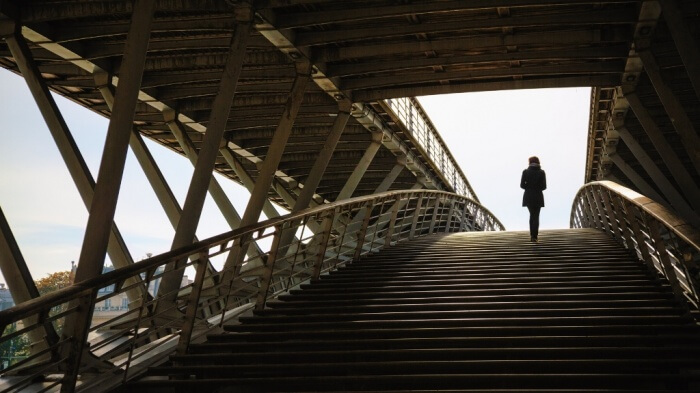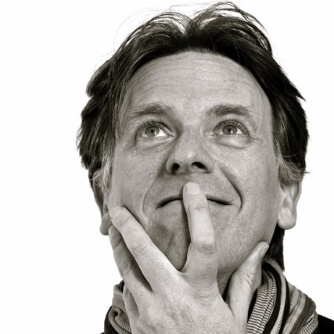Even the busiest schedules provide opportunities to pause, relax and breathe. You just need to know where to look.
Mind the Gap! How To Find Time In Your Day To Re-energise
Even the busiest schedules provide opportunities to pause, relax and breathe. You just need to know where to look.

As we say goodbye to Summer the appointments start piling up in the diary. Nothing wrong with being busy but our lives seem – well – full. And getting fuller.
But look closer. Instead of focusing on all the things you have to do, look at the gaps between the tasks. The pauses between the conversations. The transitions from one place to another. Scientists tell us that matter is mostly space. In the same way our diaries, even the most intense ones, are actually full of gaps.
They may be micro-moments but taken together they add up to huge amounts of empty potential. If you can learn to spot and use these spaces you’ll discover an untapped source of energy, refreshment and vitality.
Here are some ways you can become more skilled at accessing this free, unused space every day. With a bit of practise, you won’t need to wait for the next official ‘break’ to relax and restore yourself.
Mark the Moment
A great place to start is to notice when one thing ends and another begins. When you complete a conversation, a phone call, a task, make a mental note. Say ‘that’s done’ to yourself before you plunge into the next – you’ll instantly have more clarity about what you are up to, moment to moment. It’s not the individual tasks that tire us but the endless multi-tasking.
Multi- tasking has been proven time and again to slow us down and induce stress. “Multi-tasking is what makes us feel pressed for time,” says Elizabeth Dunn, psychology professor at the University of British Columbia.
“No matter what people are doing, people feel better when they are focused on that activity.” Marking the break between short tasks you stick to delineates focus to your day.
Breathe!
The quickest way to reset your system and clear the whiteboard of your mind is to breathe well. A deep, conscious breath or two focuses and energises your brain. It’s amazing how just a few breaths like this works to reboot our operating system. Michael Townsend Williams, author of Do Breathe, has a useful concise video to learn the basics.
Breathing is a profoundly simple mechanism that’s at the heart of all meditative practises including the modern mindfulness movement. As Michael Rennie, Senior Partner of McKinsey & Company says “What’s good for the spirit is good for the bottom line.”
Press Pause
Many of us confuse high performance with continuous performance. We think if we have a lot to do, we should plough on until it’s done. Then we’re often disappointed to find our concentration and enthusiasm tapering off. Human energy ebbs and flows. If we’re smart, we build pauses into the flow of the day that reflect this.
In his excellent book, One Second Ahead, Rasmus Hoogard, makes a case for performance breaks every 45 minutes or so. The pause is particularly important in meetings, which often last longer than the attention of the people having them.
Research suggests that managers within businesses spend between 50% and 75% of their time in meetings. 42% of these meetings produce no actionable results. If in doubt, cut a meeting into chunks, each focussing on a different point, with a performance pause in between. Two short is better than one long!
Use all your Yous
As you start to punctuate your day you’ll notice different activities require different aspects of you, different intelligences, if you like.
For example, in my normal day I may wake up in a foreign hotel, do some client work, travel to the UK, come up with new ideas for my social venture, sing a bit, handle emails, scribble some ideas for a new book and finally (with luck) spend the evening with my family.
That requires many different me’s. Every time I start a new part of the day – in that micro gap we spoke about - I try to install the part of me who is most expert at it. This saves energy as the day has been shared out amongst an internal team.
Check out more about this multi-personality approach on sites like the zen-influenced Big Mind. Or you could simply try it as a technique.
Wander
Look at your diary and see how much time you spend physically moving between various engagements. Include your journey to and from and work, visiting colleagues or clients, moving round your own workspace. We tend to rush travel, seeing it as dead time. It is actually another hidden gap - with hidden treasures.
Firstly, you can physically engage with people in conversation, away from the virtual world which is vital to our wellbeing. Secondly, walking is a wonderful aid to thinking. “All great thoughts are conceived by walking” said philosopher Frederich Neitzche. Instead of hurrying to the next problem, try using the walk to solve the current one.
Street Wisdom is a social enterprise that teaches you how to read the streets to gain inspiration and clarity. Whenever you find yourself in the street, remember it’s where your customers live, where new ideas lurk and where you have anonymity to just be you.
And if you find you have a little more time than you need to get from A to B, take a side street, get a little lost, have a wander. There is something about physically wandering that breaks our routine thinking and releases our creativity. It’s a way of being a traveller in your own town and keeping the spirit of Summer going all year round.
David Pearl, business innovator, author and founder of Street Wisdom www.davidpearl.net @davidpearlhere @street_wisdom
Street Wisdom is partnering with the Mind and Matter Leaders Conference, on the 14th October 2016, with David as chairman: The UK’s first mindful leadership conference exploring the application of mindfulness at work and how it generates high-performance leadership. Tickets www.mindandmatterleaders.com @MindandMatter_
Thanks for signing up to Minutehack alerts.
Brilliant editorials heading your way soon.
Okay, Thanks!




